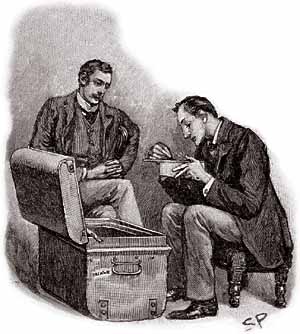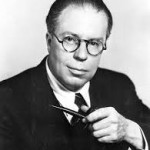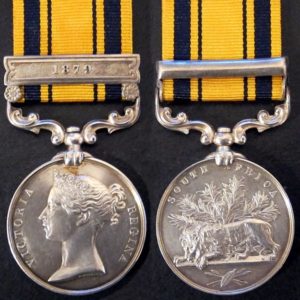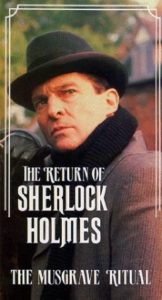A Scion Society of The Baker Street Irregulars

Data! Data! Data! – The Musgrave Ritual
“‘Data! Data! Data!‘ he cried impatiently. ‘I can’t make bricks without clay.’”
– The Adventures of The Copper Beeches (COPP)

This column is composed of material (Data!) developed for a short course called Appreciating Sherlock Holmes that I teach twice a year in the Community Education Life Enrichment Program for a local community college. It is composed of “points of information” that are common to many / most / all of the 60 Canonical stories.
The information here has been researched by me or borrowed / stolen from many efforts of other Sherlockians.
In this story, we have Holmes telling Watson about one of his earliest adventures that took place before they ever met. It, therefore, is not enhanced by any of the “romanticizing” or “dumbing-down” that Holmes always complains that Watson adds to the stories.
HERE GOES This month’s story is The Musgrave Ritual
 CHRISTOPHER MORLEY SAID . . .
CHRISTOPHER MORLEY SAID . . .
“Watson’s insistence that Holmes clean up his papers brought out this strange story. Like the preceding case, it began with a friendship of Holmes’s college days. The Ritual concerns one of the most precious relics of English history, and one doubts whether even “some legal bother,” as Holmes says, would keep it in the private possession of the Musgraves. – Another problem is whether Watson realized the Ritual would only be correct at a season of the year when the sun’s declination was the same as the date of the original formula.”
DUMMIES SHORT SUMMARY (From Sherlock Holmes for Dummies by Steven Doyle & David Crowder)
“Holmes must have been in a chatty mood as he follows Gloria Scott with yet another tale of college-age mystery solving.”
PUBLISHING HISTORY
• This story is the 20th of the stories to be published
• It was first published in The Strand Magazine, May 1893
• It the U.S. it was published in Harper’s Weekly, May 13, 1893
• It is part of The Memoirs of Sherlock Holmes collection published by George Newnes, Ltd., 1894 and Harper Bros., New York, 1894
• The British illustrator was Sidney Paget and the U.S. illustrator was W. H. Hyde
HOW MANY WORDS?
According to C. E. Lauderback, 1960 – – found on SHERLOCKIAN.NET website of Chris Redmond, at 7,632 words MUSG has the 23rd most words (#1 is VEIL – 4,499, #56 if NAVL – 12,701)
THE BEST OF SHERLOCK HOLMES (How do Sherlockians rate this story?)
1927 – Arthur Conan Doyle had it #11 on list of 12 favorites
1944 – The Baker Street Irregulars voted it as #6 on their top 12 favorites
1959 – The Baker Street Irregulars voted it as #6 on list of 10 favorites
1999 – The Baker Street Irregulars, again voted it #6 of 56
1999 – Sherlock Holmes Society of London – 6 of 56
CLASSIFYING THE CASE (From the Wandering Gipsies of Grimpen Mire of Decatur, Alabama)
This case is one of 23 classified as a MURDER where the perpetrator Holmes solved the case but one of 5 where the perpetrator escaped justice. The others were FIVE, GREE, RESI, and WIST.
CHRONOLOGICALLY SPEAKING
Doyle was often very vague about stating WHEN the tale took place and included few contemporary references to help. Whether this was done intentionally or unthinkingly, the dating of events in the Canon is a very popular pastime pursued by several of our “scholars” researching and justifying their results to no end. We will again default to William Baring-Gould’s dating of Thursday, Oct 2, 1879 making it 2nd of the 60 stories in time. This means that Holmes was 25 and Watson 27.

WHAT ELSE HAPPENED IN YEAR? (1879)
It is always interesting to see what else in happening at the same time as the stories.
• The Zulu War breaks out in South Africa as the Zulus deal England one of her greatest defeats (Isandhlwana) but the British claim a victory at Roarke’s Drift. The Zulus agreed to peace terms but not until after the Prince Imperial, son of Napoleon III, is killed there.
• Anglo-French control over Egypt
• Britain occupies the Khyber Pass in Afghanistan but its envoy is massacred in Kabul.
• London installs it first telephone exchange.
• For the first time, frozen meat from Australia is sold in London.
• New Scotland Yard begins first full year of operations.
• Londoners flock to see Cleopatra’s Needle which was erected the year before.
• British Museum eliminates admission price for the public.
• U.S. prohibits the influx of Chinese laborers.
• Saccharin, the artificial sweetener, is discovered.
• George Eastman (of Eastman/Kodak) develops dry photographic plates.
• Thomas Edison develops the first practical electric lamp, as does J.W. Swan of England.
• George Selden develops an internal combustion engine for “horseless” carriages.
• Mary Baker Eddy founds the Christian Scientists.
• F.W. Woolworth opens his first store
• Chile declares war on Bolivia and Peru
• DeLesseps founds the Panama Canal Company and begins work.
• Dostoevsky writes The Brothers Karamazov.
• Brahms composes the piano work, Rhapsodies.
HOLMES AND WATSON – PERSONAL INFO
The story opens with Holmes and Watson sharing quarters at 221b. Holmes then relates a tale that took place when he lived at Montague Street before they met.
DRAMATIS PERSONAE
The smallest group of characters as any story in the Canon.
• REGINALD MUSGRAVE, owner of Hurlingstone, an ancient estate with a large old manor house and encrusted with history.
• BRUNTON, Musgrave’s head butler and major domo. Eminently overqualified for the job.
• RACHAEL HOWELLS, jilted suitor of Brunton. They were formerly engaged.
• JANET TREGILLIS, current suitor of Brunton.
“QUOTABLE SHERLOCK”
• Watson says “Holmes, in one of his queer humours, would sit in an armchair with his hair-trigger and a hundred Boxer cartridges and proceed to adorn the opposite wall with a patriotic V. R. done in bullet-pocks.”
• Holmes says this to Watson about Reginald Musgrave “Something of his birth place seemed to cling to the man, and I never looked at his pale, keen face or the poise of his head without associating him with gray archways and mullioned windows and all the venerable wreckage of a feudal keep.”
• “I am generally recognized both by the public and by the official force as being a final court of appeal in doubtful cases.”
• Holmes to Musgrave – -“‘Yes,’ said I, ‘I have taken to living by my wits.'”
• Reginald Musgrave to Holmes – – “The butler of Hurlstone is always a thing that is remembered by all who visit us.
• Musgrave saying about the Ritual – – “It is a sort of ceremony peculiar to our family, which each Musgrave for centuries past has gone through on his coming of age — a thing of private interest, and perhaps of some little importance to the archaeologist, like our own blazonings and charges, but of no practical use whatever.”
• Holmes to Watson about after finding Brunton – – “A man always finds it hard to realize that he may have finally lost a woman’s love, however badly he may have treated her.”
• Holmes to Watson wrapping up the story – – “They have the crown down at Hurlstone – though they had some legal bother and a considerable sum to pay before they were allowed to retain it. I am sure that if you mentioned my name they would be happy to show it to you.”
HOLMES’ FEE
There is no direct mention, but as Holmes was young and just starting out, and viewed the consultation by Musgrave as the very chance for which he had been panting during months of inaction.
SHERLOCK ON THE BIG SCREEN & THE LITTLE SCREEN
This story has only be on the screen four times. It probably would have been done more often if it followed the standard Holmes and Watson “format.”
1922 The Musgrave Ritual with Eillie Norwood. The National Film and Television Archive at the BFI has viewing copies of this film but it has not been released
1968 The Musgrave Ritual with Peter Cushing as part of a BBC Sherlock Holmes series. All copies are lost
1986 The Musgrave Ritual with Jeremy Brett in the Granada Sherlock Holmes series. One of the best in the series.
1999 The Musgrave Ritual as an episode in the Sherlock Holmes in the 22nd Century animated TV series
SHERLOCK HOLMES IN DISGUISE
The Master of disguise used the deception of being disguised 14 times in 11 of the 60 stories, but not in this one.
UNRECORDED CASES (That involved Holmes)
Watson would tease / torture his readers with “I know something you don’t.” Oh my, how Sherlockians love this category. I have in excess of over 150 examples in my collection. Before Holmes got to telling Watson the tale, these were mentioned:
• Tarleton murders
• Vamberry the wine merchant
• The old Russian woman
• The singular affair of the aluminum crutch
• Ricoletti of the club foot and his abominable wife
FAINTING IN THE CANON (courtesy of Sherlockian Karen Murdock)
Fainting is extremely common in the Canon, appearing, in some form, in 37 of the 60 tales. In 21 cases someone actually faints. In 22 cases someone almost faints. And in 5 cases someone pretends to faint. In this month’s story no one faints, almost faints, pretends to faint, or even mentions fainting.
HOLMES’S PUBLISHED & PROJECTED WORKS
Sherlockians love this topic and are regularly searching for these items. Holmes mentions published or projected works in 11 of the stories:
None are mentioned in this story.
NEWSPAPERS (Real and Fictional)
Though included in only 20 tales some of our more obsessed Sherlockians love this one.
No mention of the press by name in this tale.
ANNOTATED SHERLOCK
The 60 Sherlock Holmes stories used English as spoken in England from the 1880’s until the 1910’s. Some words are foreign to us today and need a “contemporary translation.”. For example:
• “aluminum crutch” in 1886 only 15 tons of aluminum were produced world-wide. It was more expensive than gold or silver. The “Bayer” process for smelting was developed in 1888 and by 1900 it had become a common industrial metal.
• “mullioned windows” windows with their panes divided by a vertical bar.
• “our own blazonings and charges” technical terms for a family coat of arms and its details
• “edge of the mere” a lake, pond, or marsh
• “scion” A descendent (as an “aside” American Sherlock Holmes societies use the term “scion” to honor the Baker Street Irregulars in New York – which was the first in the world)
• “brain-fever” In Victorian literature, brain-fever seems to strike those who have experienced emotional distress. That implies to me that it is not something caused by germs, but is a different condition; that it is a sort of mental disorder, at least a mental disorder as imagined and described by people of the time. It does not seem to be a common condition today.
• “assiduous’ constant; unremitting: constant in application or effort; working diligently at a task; persevering; industrious; attentive:
WEAPONS (from A Compendium of Canonical Weaponry by Dettman and Bedford)
… “a means by which one contends against another” … utilized in 57 of the 60 tales (all but CREE, 3STU, & YELL) There are several general categories to classify “weapons” that include: firearms, human agents, cutlery, animals, blunt instruments, extortion, toxin, blackmail, and miscellaneous. In our story, which is short, you will find a few with the mildest being the “murder weapon”
• Pistol – With hair trigger, which Holmes used to practice marksmanship indoors, drilling patriotic VRs on the opposite wall.
• Guns – In the gunroom of Hurlstone Manor.
• Battle Axe – Hanging on a wall in Hurlstone Manor, which Reginald Musgrave took down for defense against
• Old Weapons – Assorted, which were hanging on the walls of Hurlstone Manor.
• Large Boulder – Over the entrance of the hidden chamber underneath Hurlstone Manor, which was dropped back into place by Rachel Howells before Brunton could get back out, thus causing his death.
OTHER ODD STUFF
Every time I read this tale . .
. . . it seems incredible to me that over the course of ten generations, not one single Musgrave recognized the Ritual for what it was: directions to where something was hidden–a treasure of some sort. Is it possible that the Musgraves could have been that stupid or dense?
A very famous Sci-Fi author who was also a Baker Street Irregular
From Asimov’s Sherlockian Limericks (1978) Mysterious Press
What is better for Holmes’s detection
Than an ancient and cryptic direction?
Brunton rifles a drawer
In his lust to know more
— But it yields to young Sherlock’s dissection.
 Frank Mentzel, aka Merridew of Abominable Memory, is the current Gasogene of the Six Napoleons of Baltimore and is starting the planning for his four week Appreciating Sherlock Holmes classes for the Community Colleges of Baltimore County, MD for the Fall semester.
Frank Mentzel, aka Merridew of Abominable Memory, is the current Gasogene of the Six Napoleons of Baltimore and is starting the planning for his four week Appreciating Sherlock Holmes classes for the Community Colleges of Baltimore County, MD for the Fall semester.

Sorry, comments are closed for this post.